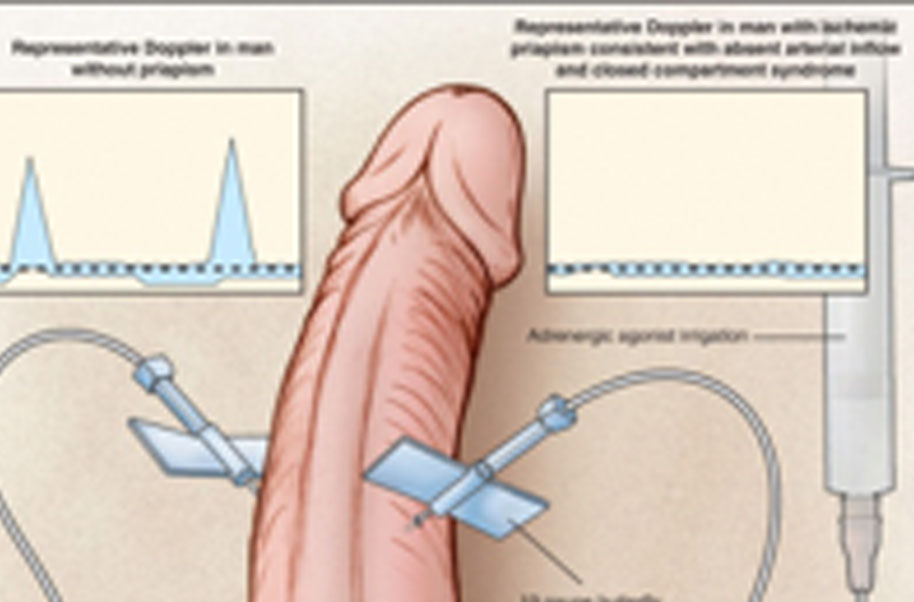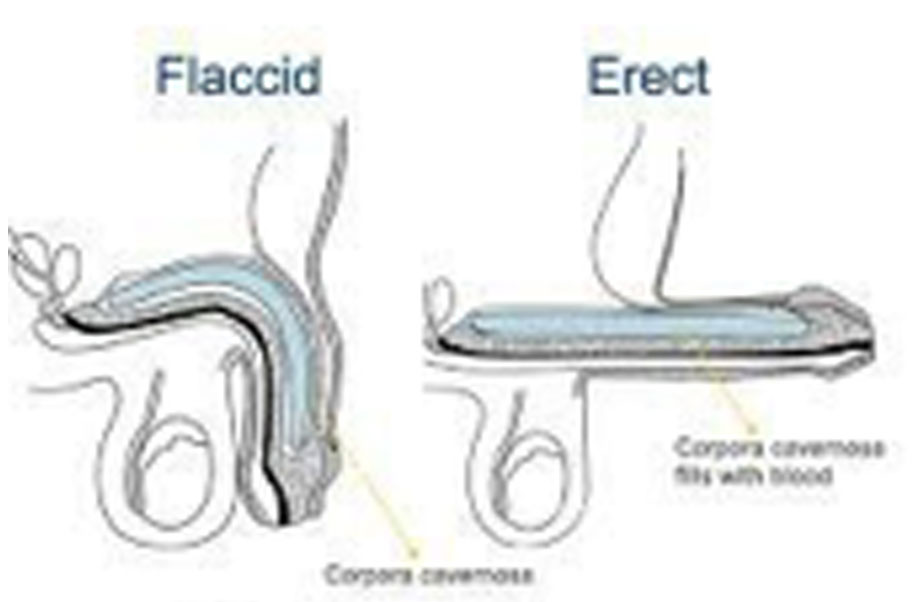Diseases
Ischemic Priapism
Priapism is a prolonged erection of the penis. The persistent erection continues hours beyond or isn't caused by sexual stimulation. Priapism is usually painful. Although priapism is an uncommon condition overall, it occurs commonly in certain groups, such as people who have sickle cell anemia. Prompt treatment for priapism is usually needed to prevent tissue damage that could result in the inability to get or maintain an erection (erectile dysfunction). Priapism is most common in men in their 30s.
SYMPTOMS
Priapism symptoms vary depending on the type of priapism. The two main types of priapism are ischemic and nonischemic priapism.
Ischemic priapism
- Ischemic priapism, also called low-flow priapism, is the result of blood not being able to leave the penis. It's the more common type of priapism. Signs and symptoms include:
- erection lasting more than four hours or unrelated to sexual interest or stimulation
- rigid penile shaft, but the tip of penis (glans) is soft
- progressive penile pain
- Recurrent or stuttering priapism, a form of ischemic priapism, is an uncommon condition. It's more common in males who have an inherited disorder characterized by abnormally shaped red blood cells (sickle cell anemia). Sickle cells can block the blood vessels in the penis. Recurrent priapism describes repetitive episodes of prolonged erections and often includes episodes of ischemic priapism. In some cases, the condition starts off with unwanted and painful erections of short duration and might progress over time to more frequent and more prolonged erections.
Nonischemic priapism
Nonischemic priapism, also known as high-flow priapism, occurs when penile blood flow isn't regulated appropriately. Nonischemic priapism is usually painless. Signs and symptoms include:
- erection lasting more than four hours or unrelated to sexual interest or stimulation
- erect but not fully rigid penile shaft
CAUSES
- An erection normally occurs in response to physical or psychological stimulation. This stimulation causes certain blood vessels and smooth muscles to relax and/or expand, increasing blood flow to spongy tissues in the penis. Consequently, the blood-filled penis becomes erect. After stimulation ends, the blood flows out and the penis returns to its nonrigid (flaccid) state.
- Priapism occurs when some part of this system — the blood, blood vessels, smooth muscles or nerves — changes normal blood flow. Subsequently, the erection persists. While the underlying cause of priapism often can't be determined, several conditions are believed to play a role.




Chitradurga
Seebara, Behind Indian Oil Petrol Bunk, Basavakumara Swamy Mutt, Chitradurga - 577504
Kunigal
K Huraliborsandra, Gowdgere Post, Dhomratti Temple Road, Kunigal, Tumakuru District. - 572130
Bengaluru
36, KG Gollarapalya, Bolare (P), Kanakapura Road, Bengaluru - 560082

